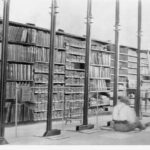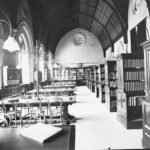Historians of South Australia have asked one question above all others: how is South Australia different? Nineteenth-century historians, such as John Stephens, James F Bennett, Francis Dutton, Frederick Sinnett, William Harcus, Edwin Hodder and James Dominick Woods, wrote in the certainty that South Australia was unlike its distant parent or its near colonial neighbours. They described the ways in which the first colonists tried to create a new society better than those they had left. They also claimed the distinction of belonging to a free colony begun without convicts, unlike older settlements to the east of the continent. The enduring story of South Australia was laid out at a distance and before settlement by Edward Gibbon Wakefield in a scheme he called systematic colonisation. By a judicious control of the price and availability of land, the colony would attract capital, keep its labour and provide incentives for improvement. It would be a concentrated settlement that fostered agriculture, urban amenity and the virtues of civilisation unmarred by excesses of wealth or poverty. This noble vision of unfolding capitalist prosperity would be achieved without the taint of involuntary labour, enslaved or convicted, or the oppressions of an aristocratic and episcopalian state. South Australia would become, in the words of Douglas Pike’s magisterial history of the early colony, a paradise of dissent.
Wakefield’s confidence in difference has persisted across time and through successive waves of historiographical fashion, with good and bad results. In the best of historical writing about South Australia, the importance of difference has been inescapable. John Hirst’s study of the relations between the capital city and its hinterland, for example, explored the consequences for how South Australians thought and acted of the unique concentration of population and power in Adelaide. The elites lived in the city, unlike New South Wales and especially Victoria; they ran complex, diverse empires of farming and grazing and trade and commerce in which the squatter who ran nothing but sheep had little place; they sat in parliament and walked the short distance to the Adelaide Club; and they drew the eyes and aspirations of all South Australians to the metropolis. No capital city dominated its colony as Adelaide did South Australia. DW Meinig described the harrowing results of defying soil and climate to push the bounds of cultivation north beyond the limits of good rainfall. Many farmers who ignored the warnings and tilled too far north failed. But behind them an agrarian economy of grain growing flourished, so that from the mid nineteenth century the colony was the granary of Australia and the small farmer the backbone of the colony’s wealth to an extent unequalled elsewhere in the country.
Michael Williams discerned a visible legacy of Edward Gibbon Wakefield’s planned development in the South Australian landscape. The human transformation of the landscape since settlement was, in Williams’ account, a triumph of theoretical planning, controlled growth and pervasive government involvement in land survey and township creation, a pattern of alteration unmatched anywhere else in Australia, and perhaps the world. The heyday of government activity began in the mid 1860s, and its most characteristic expression was the proliferation of little Adelaides through the colony. The capital’s threefold pattern of central townland, parklands and outer suburban areas was replicated with metrical precision across the landscape. Governments continued to impose their vision on the landscape well into the twentieth century as the economy shifted from a predominantly agricultural to a predominantly manufacturing base, yielding for example the industrial utopia of Elizabeth on the outskirts of Adelaide. The evidence of South Australia’s difference is quite literally imprinted on its urban and rural landscapes.
The limitation of this preoccupation with difference is that the history of South Australia often seems to have little to do with the history of the continent as a whole. Few local studies have as their primary purpose the illumination of larger themes in Australian history. The history of South Australia is dramatically under-represented in the national historical journals. General histories of Australia rarely find a place for the colony once it had survived the financial crisis that blighted its early utopian expectations; for the most part they accept at face value local claims to be outside the larger patterns of Australian experience.
Exceptions to the history of difference, histories of ordinary South Australians
The exceptions to this discovery of difference have come not from the dominant narratives of white settlement, economic growth and political change, but from the stories of ordinary lives these narratives frequently omit. The concerns of historians of women and children, of the home and the school, of struggle and disappointment, are with the borderless experience of class, gender and inequality rather than with spatial or institutional difference. They look beyond geographic boundaries to search for the things that connected the lives of ordinary South Australians to the rest of Australia and to the world. Two recent examples will suffice. In a luminous study of his home town of Elizabeth, Mark Peel noted the similarities in the experiences of industrial communities on the outskirts of Adelaide, Melbourne and Sydney that were made and then unmade, to use his phrase, by political and corporate decisions about the structure of the Australian economy. Pavla Miller’s history of secondary education in South Australia is set within global patterns of educational change that subjected the schooling of young people to the needs of industrialising economies. It draws on the work of other South Australian scholars for whom the imposition of compulsory schooling on children hitherto employed in the casual and seasonal labour markets of rural economies was the defining moment in the emergence of mass education.
The historiography of South Australian women straddles the modes of difference and similarity, sometimes precariously. A common variant of the disposition to see the state as different is the quest for South Australian firsts. Some of the most notable concern women, and historians have tried to explain them. To Helen Jones, the colony’s pioneering achievement of votes for women, in municipal then later parliamentary elections, was the product of its origins as a free and planned settlement. Other scholars noticed instead the undertow of currents that kept women in the home and made it difficult for them to swim with the tide of legislative change – South Australian women were the first in Australia to gain the right to enter parliament and the last to do so in its lower house. Susan Magarey’s biography of Catherine Helen Spence followed the public career of a woman who spent her life trying, with limited success, to improve the status and lives of women and children. What Magarey called the patriarchal provincialism of South Australia proved highly resistant; but Spence’s achievements in the face of formidable opposition won her national and international prominence: how do we explain her singular life, and the lives of other women who joined her struggle, without some reference to the favourable contexts in which they campaigned for change? What unites Jones and Magarey and joins them with other historians of women is their conviction that we will not understand the improvements in the status and conditions of women as long as we persist in the view that benevolent male institutions handed them rights and privileges they neither wanted nor fought for. Women, they say, were their own makers, in South Australia as elsewhere.
Histories of politics and religion
By contrast historians of politics and religion have been comfortable with difference. The utopian and dissenting traditions breathe through their work, which is often presented as edited collections of essays. We know most about those periods in the political history of South Australia under self-government in which the protagonists were agents of change, often profound. Tom Playford was a conservative farmer who transformed the economic base of the state from agriculture to industry. Don Dunstan had a vision of a cultural renaissance that he hoped would touch the lives of every South Australian. John Bannon was the enigmatic Labor premier who chose restraint when he had the electoral authority to innovate. The spectacular political career of Charles Cameron Kingston still lacks its historian, oddly in view of how well he fitted the mould of utopian innovator.
In the absence of an established church in South Australia, the state has been a small player in religious life. After a brief engagement with a modified form of state aid between 1846 and 1851, Dissenters and their parishioners devoted their energies to fighting the private vices of secularism rather than the public vices of oppressive laws and arrogant Anglican churchmen. For religious historians of South Australia their subject consists, in the words of David Hilliard, in the history of religious equality and religious freedom, neither of which is true for the parent country or the eastern colonies. Difference remains the governing idea in the historiography of South Australia.
Recent histories of South Australia
The numerous early histories of South Australia that elaborated Wakefield’s idea of difference were mostly written by single authors. Their grand and celebratory narratives were suited to their subsidiary purpose of promoting the colony as a destination for migrants and money. Whatever their faults, they tried to observe the colony as a whole and convey a unified vision of the past difficult to achieve in multi-author texts. Only two histories of this kind appeared in the second half of the twentieth century; one was RM Gibbs’s general history of South Australia intended primarily for schools, and the other Derek Whitelock’s history of Adelaide rather than of the state as a whole. The Flinders sesquicentenary history of South Australia, like the earlier centenary history prepared by the Royal Geographical Society, was the product of many pens and as many viewpoints. It reflected the state of the discipline of history at the moment it appeared. Scrupulous in their respect for the sources, suspicious of stories of progress, sceptical of the capacity of a single idea to explain the past, and uncertain of their fitness to write outside their specialist interests, its authors wrote individual pieces of great value that collectively fell short of a comprehensive account of South Australia’s history.






Comments